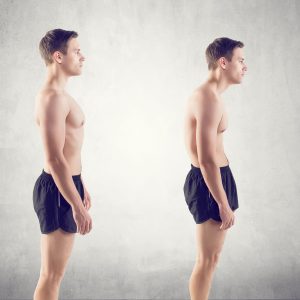A common postural fault that we see in clinic is an increase in the upper back curve, also known as an increased kyphosis. This increased kyphosis is also associated with rounding of the shoulders.
How do we fix this posture?
One of the most common approaches given is a “row” or pullback type of exercise. The theory here is that by strengthening the muscles that pull the shoulder blades back, the upper back curve will reduce and posture will return to normal. However there is a fundamental error in this approach
You see, when we perform “row” type movements we are aiming to strengthen the rhomboid and middle trapezius muscles. In theory this is a good thing as these muscles do assist with control of shoulder position. The problem is that they are relatively small and weak muscles, and they work in response to other regions.
Once upon a time we used to take the same approach with knees that cave in. We summised that the balance of the quadriceps muscles which attach to the knee cap must be incorrect leading to one muscle not pulling its load. We focused all of our energies into strengthening this one muscle and found that things often didn’t change! What we eventually learned was that movement of the leg required a lot more control from many more muscles than just purely the quadriceps.
Applying this principle to the upper back, by simply doing exercises to pull the shoulders back and relying on isolated muscles that alone do not have the strength to support posture, we don’t see great changes.
How do we achieve better changes?
Firstly we address the mobility and stability in the neck area, and we make sure that we first have the flexibility in the upper back region to achieve good posture.
Secondly our strengthening approach needs to load our posture in a functional way. One of the easiest ways to achieve this that is commonly overlooked, is to perform exercises that require us to carry a load. This allows us to integrate the function of these shoulder stabilisers with the rest of the muscles in the trunk area that support good posture. In addition, holding a weight that causes our centre of balance to move forward, forces us to adopt a more upright position to ensure we don’t fall over!

